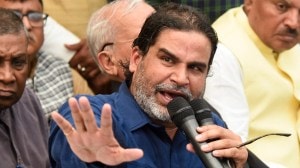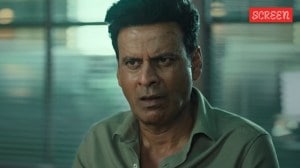Autumn in New York
HEAR him out before you succumb to cynicism. Satish Gujral’s three-week-long exhibition of paintings at New York’s Gallery ArtsIn...

HEAR him out before you succumb to cynicism. Satish Gujral’s three-week-long exhibition of paintings at New York’s Gallery ArtsIndia, his second in two years, started on April 23. Though this news may set off some speculation among those who have followed his career, know this: Gujral has not turned his back on the values he has held dear all his life. The man who shunned the European vocabulary adopted by the Progressive Artists Group spearheaded by FN Souza, MF Husain and SH Raza among others in newly independent India, the man who has clung to his belief that modernity in Indian art should not necessitate a western idiom, insists he has not changed his mind.
‘‘Up to 1976, I used to exhibit in New York every second year,’’ says Gujral. ‘‘But I realised that over there, if an Indian artist was not modern in the Western sense, it didn’t matter how good you were.’’ Gujral did not show in New York from 1976 to 2002 because ‘‘there seemed to be only a handful of liberals encouraging Indian artists whose work looked Indian’’.
He smiles as he tells us how pleasantly surprised he was to discover that ArtsIndia caters to a growing trend among NRIs to patronise Indian art that is rooted in India. His 26 acrylics on canvas that will be displayed there mark a continuing relationship with those silent figures in strong, flowing lines that have become a trademark, in a colour scheme favouring brooding maroons and blacks.
At 78, Gujral remains as excited about his work as a teenager on the threshold of college. ‘‘I paint at this age because it is the joy of living,’’ he says. His diary is full up till 2006 when he will return to New York. This November, Delhi’s National Gallery of Modern Art is hosting a Gujral retrospective to be accompanied by the release of a book on his work. Between preparations for shows in Mumbai and London, he still finds time for his other passion, architecture. Six months back, Gujral completed work on a palace in Riyadh for Saudi Arabia’s royal family. He also hopes to further explore bronze sculptures.
What secret elixir keeps him going? Maybe it is the ‘‘inner peace’’ that his wife Kiran tells us he finds in silence. A few years ago, Gujral had opted for an implant in his inner ear that partially restored the hearing he had lost as a child. The implant has been removed, says Kiran, ‘‘because he found the sounds too disturbing’’.
But inner peace isn’t the only energiser. ‘‘There is a misconception about age,’’ says Gujral. ‘‘The older you grow, the more you know. And the older you grow, the more you become conscious of the fact that there may be no tomorrow. Whatever it is I have to say, I should say it soon. The realisation gives me a sense of urgency and the urgency gives me energy.’’ So long as he keeps the work coming …



- 01
- 02
- 03
- 04
- 05




























